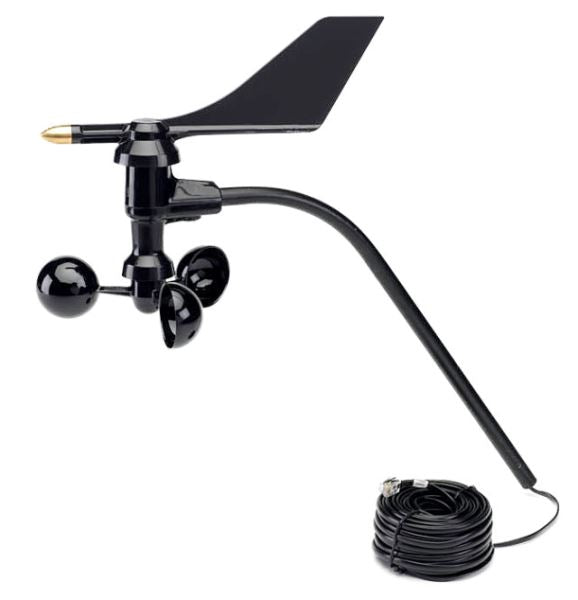Contrasting Digital and Mechanical Anemometers: Which is Right for You?
Contrasting Digital and Mechanical Anemometers: Which is Right for You?
Blog Article
Checking Out the Functions and Benefits of Anemometers for Weather Lovers and Specialists
From mug anemometers to sonic anemometers, each kind brings its distinct set of applications and benefits, dropping light on various facets of atmospheric problems. As we dive into the features and benefits of anemometers, a much deeper understanding emerges not just of prevailing climate sensations but additionally of the wider implications for markets like wind energy manufacturing and environmental research study.
Importance of Anemometers in Climate Monitoring
Anemometers play a vital duty in climate monitoring by offering precise measurements of wind speed, helping in projecting and understanding weather condition patterns. These tools, varying from conventional cup anemometers to modern ultrasonic anemometers, are vital for meteorologists, scientists, and weather condition lovers alike.

Kinds Of Anemometers and Their Applications
With the vital duty anemometers play in weather surveillance and projecting, comprehending the different sorts of these instruments and their applications becomes important for professionals and fanatics in the field. The most usual kinds of anemometers include mug anemometers, vane anemometers, hot-wire anemometers, and ultrasonic anemometers. Mug anemometers contain 3 or 4 cups placed on straight arms that rotate with the wind, gauging its speed. Vane anemometers, on the other hand, make use of an easily rotating vane to straighten with the wind direction, providing both wind rate and direction dimensions. Hot-wire anemometers operate based upon the principle of convective warmth transfer, where the cooling impact of the air circulation is determined to determine wind rate. Ultrasonic anemometers utilize ultrasonic audio waves to determine wind speed and instructions accurately.
Cup anemometers are robust and ideal for basic climate monitoring, while vane anemometers are favored for directional dimensions. Ultrasonic anemometers are non-intrusive and offer high precision, usually used in research study and specialized weather condition surveillance applications.
Benefits of Using Anemometers in Projecting
In weather forecasting, the utilization of anemometers offers important advantages for enhancing the accuracy of climate forecasting. Anemometers measure wind rate and instructions, supplying critical information for anticipating weather condition patterns. By incorporating wind information right into forecasting models, meteorologists can much better recognize the motion of weather condition systems, anticipate changes in climatic problems, and issue more specific projections.
Additionally, anemometers play an important role in analyzing prospective weather threats. Checking wind rates helps forecasters forecast severe climate events such as hurricanes, hurricanes, and winter season tornados with higher accuracy. This very early warning system makes it possible for authorities to issue prompt notifies and implement necessary precaution, reducing the dangers to life and building.
Furthermore, anemometers aid in enhancing eco-friendly energy manufacturing. By analyzing wind patterns, meteorologists can recognize suitable places for wind ranches and predict check it out power result, adding to the reliable generation of wind power.

Anemometers in Wind Power Manufacturing
Offered the crucial function anemometers play in giving accurate wind data for weather condition projecting and danger analysis, their significance extends to the realm of wind energy production. Anemometers are necessary tools in the area of wind power, where the dimension of wind speed and direction is essential for figuring out the usefulness and performance of wind generator installments. By properly measuring wind rates at varying elevations, anemometers websites aid optimize the placement and design of wind turbines to make the most of energy output.
In wind farms, anemometers are strategically placed to collect real-time wind data that is utilized to evaluate the potential energy production of a website. This information is important in determining the financial feasibility of wind energy tasks and in forecasting power generation to guarantee grid security. Furthermore, anemometers help in keeping an eye on wind problems to enhance wind turbine performance, avoid damage from high winds, and make certain the safety and security of employees operating in the vicinity of wind generators.
Enhancing Climate Recognizing With Anemometers

Anemometers play a crucial function in improving our understanding of microclimates. These localized climate condition can differ considerably from broader regional projections, making it essential to have exact information for certain areas. anemometer. By tactically placing anemometers in various areas, scientists can gather comprehensive information on how wind acts in various terrains, urban settings, or try this web-site bodies of water
In addition, anemometers add to enhancing weather condition forecasting versions by giving real-time information on wind habits. This information is particularly beneficial for forecasting extreme weather condition events, optimizing farming techniques, and supporting industries like aeronautics and maritime navigating. Generally, anemometers are vital instruments that enable us to dive much deeper right into the intricacies of climate systems, inevitably bring about even more better-informed choices and exact forecasts.
Conclusion
In conclusion, anemometers play a crucial duty in weather surveillance and forecasting by gauging wind speed and direction. They are necessary devices used by climate fanatics and professionals to collect precise information for anticipating climate patterns and analyzing possible impacts. Anemometers likewise have applications in wind energy manufacturing, further highlighting their value in both meteorology and renewable resource markets. On the whole, anemometers add to improving our understanding of climate phenomena and enhancing projecting capacities. anemometer.
From mug anemometers to sonic anemometers, each type brings its distinct set of applications and benefits, dropping light on numerous facets of climatic problems. These tools, varying from traditional cup anemometers to modern ultrasonic anemometers, are vital for meteorologists, researchers, and weather condition lovers alike. The most usual kinds of anemometers consist of mug anemometers, vane anemometers, hot-wire anemometers, and ultrasonic anemometers. Mug anemometers are appropriate and durable for basic weather condition tracking, while vane anemometers are preferred for directional measurements. Anemometers are vital tools in the area of wind power, where the dimension of wind speed and direction is crucial for determining the feasibility and efficiency of wind generator installments.
Report this page